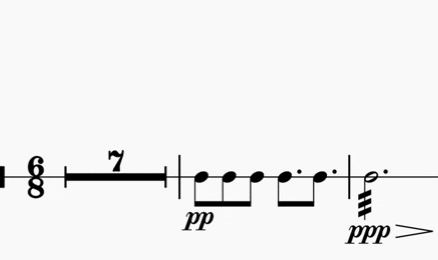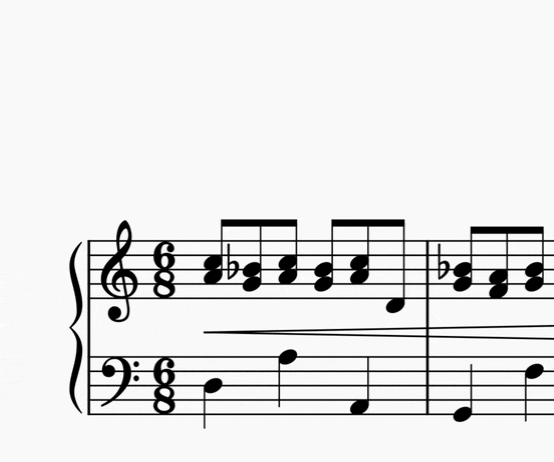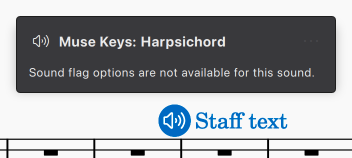Sound flags
Sound flags are available starting in MuseScore Studio 4.3
Overview
Sound flags can be added to staff text to access additional sounds and playing techniques on Muse Sounds instruments. You can download all the free Muse Sounds instruments (and soon, more sounds from the world’s best audio developers) via the Muse Hub.
When you add a sound flag (pictured below), it affects playback on the entire instrument from that point forward in the score until it reaches another sound flag.

Using sound flags, you can:
- Set string playing techniques like espressivo, sul ponticello, and bartok pizzicato
- Turn the snare on or off on the Muse Sounds Snare drum
- Choose from different choral phonemes, like ooh, ahh, and mmm
Sound flag buttons that appear in the score will never be visible when exporting, printing, or publishing your score to MuseScore.com.
To add a sound flag
- Make sure a Muse Sounds instrument is selected in the mixer
- Add Staff text from the Text palette or using Ctrl+T (Mac: Cmd+T) to the Muse Sounds instrument's staff
- Click the sound flag button next to the text field
- Select any of the options to apply it to your score
- Play the score to preview the new sound

To use a sound flag without showing text in the score
Sound flags must always be attached to a staff text element. If you wish to hide the text:
- Select the staff text
- In the Properties panel under General, uncheck Visible
To remove a sound flag
Selecting the sound flag button and pressing Del will remove it and leave the staff text in place.
Deleting the staff text will also remove the associated sound flag.
To hide sound flags in the score
- With nothing in the score selected, open the Properties panel
- Under General, click the eye icon next to Sound flags
The sound flag buttons will be hidden. They can still be edited by clicking the associated staff text to reveal its sound flag button.
Additional options
To reset a sound flag
The first options in the Modify sound and/or Playing techniques sections of the sound flag popup are the default sounds. If you wish to quickly reset a sound flag to these sounds:
- Select a sound flag button
- Click the three-dot button in the top right and select Reset to default sound
To select multiple sounds on one sound flag
You may wish to combine more than one sound option to play at the same time. If a sound flag has the Modify sound section, you can do the following:
- Select a sound flag button
- Click the three-dot button in the top right and select Allow multiple selection
- Then, select more than one sound flag button to hear the sounds together in playback

To change which staves a sound flag affects
By default, sound flags affect all staves on an instrument, but this can be changed.
- Select a sound flag button
- Click the three-dot button in the top right and uncheck Apply selection to all staves
- Repeat for sound flags on other staves

Sounds without sound flags
Not all Muse Sounds instruments have sound flag options. If we haven’t included any sound flag options yet, you’ll see this in the sound flag popup:

Keyboard navigation
To add a sound flag using the keyboard
- Select a note or rest
- Press Ctrl+T (Mac: Cmd+T) to add Staff text
- Type anything in
- Press Esc to select the text
- Press Alt+Left (Mac: Opt+Left) to open the popup
- Use Tab and arrow keys to navigate within the popup and Space to select